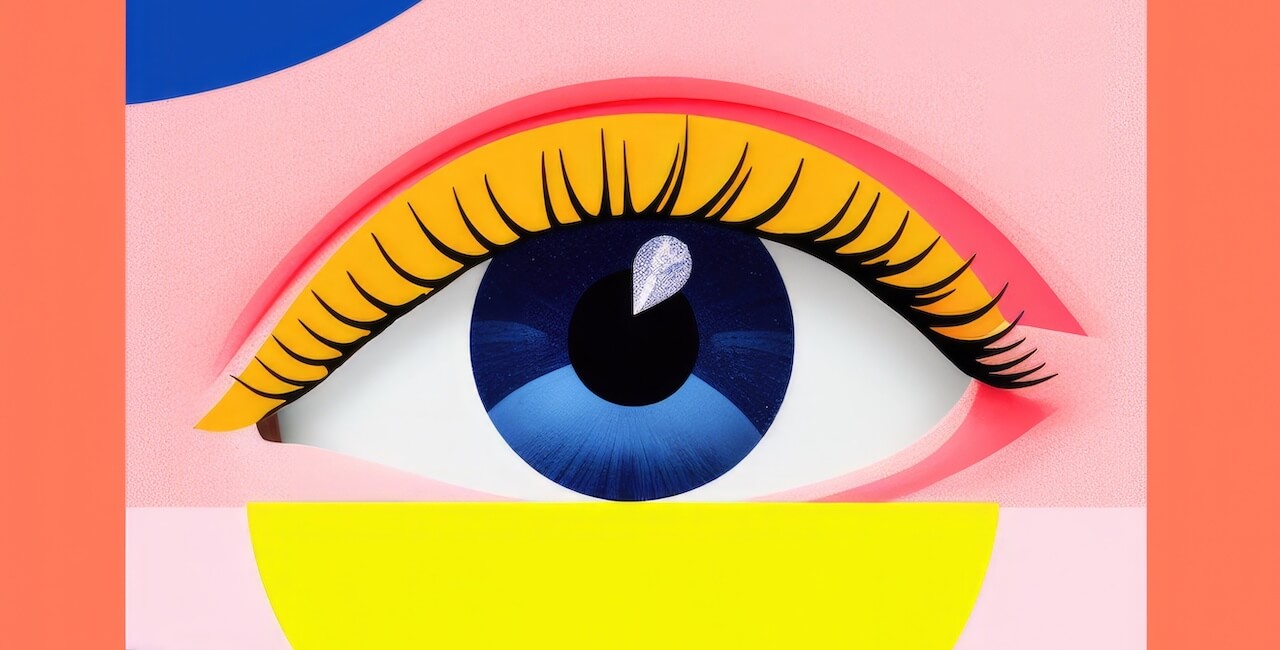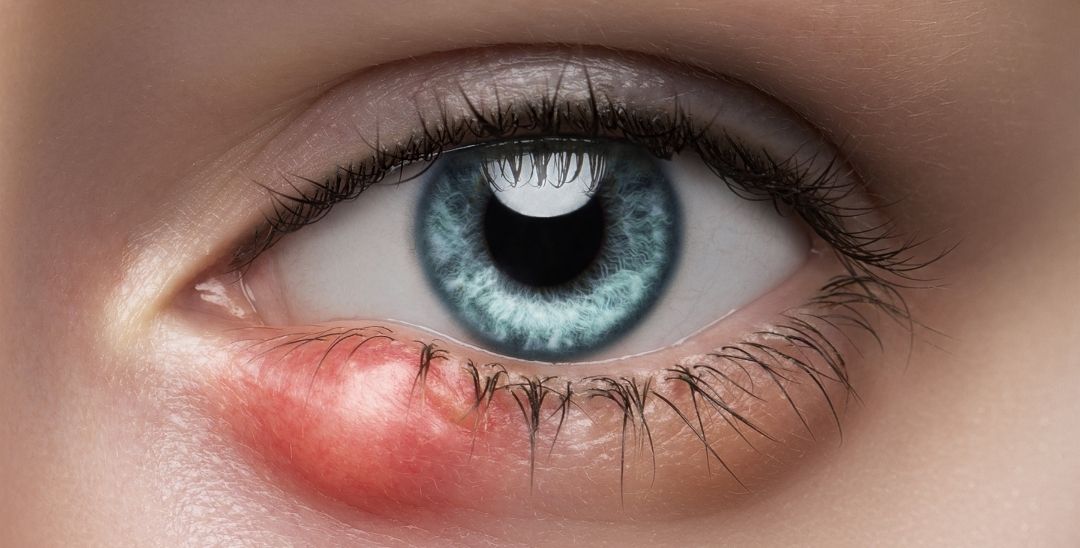What is MGD
Dry eye disease (DED) is a chronic condition caused by deficiency of any one of the three major components of the tear film: aqueous (water), mucous, and lipid (oil). Deficiency in any one of these areas leads to imbalance in tear film composition leading to chronic eye inflammation and damage to the ocular surface.
To learn more about Dry Eye Disease, be sure to read Dry Eye: Symptoms, Causes and Treatment.
Meibomian glands are sebaceous (oil-producing) glands located in the eyelids. Meibomian Gland Dysfunction (MGD) is a subtype of dry eye disease which occurs when these glands don't function properly, affecting the amount of meibum (oil) reaching the tear film. The function of the meibomian glands can be affected by many factors, one of the main ones however is aging.
The cause of MGD is chronic obstruction of the openings of the meibomian glands. This process is affected by mostly endogenous (and some exogenous) factors: age, sex, hormonal changes as well as topical medication. The obstruction gradually leads to atrophy (death) and complete dropout of the glands over time. This then affects the delivery of meibum into the tears (both the quality of meibum as well as the quantity of meibum) (reference).
The oil component of tears is crucial to the stability of the tear film - it works to protect the ocular surface (by preventing evaporation of tears) - hence why this condition is also known as “evaporative dry eye disease.” Without the proper amount of meibum, premature evaporation of the tears will occur, contributing to the cycle of chronic dry eye disease (reference).
Signs, Symptoms and Diagnosis of MGD
How do you know if you have meibomian gland dysfunction? What does meibomian gland dysfunction feel like?
The signs of MGD can be detected on a routine eye examination. Your optometrist or eye care provider will look for clinical signs of MGD using a special microscope called a slit lamp. The signs of MGD include poor quality meibum, lack of meibum upon gland expression, and telangiectasia (chronic dilation of capillaries which increases redness) of vessels on the eyelids.
MGD can cause a range of symptoms including: burning, itching, dryness, redness, tearing, intermittently blurred vision and a gritty or sandy feeling in the eyes. These symptoms are often exacerbated with prolonged screen use or exposure to environmental changes (for example, a cold wind). Patients with very mild cases of MGD may have no symptoms at all, whereas in more advanced cases, significant discomfort and interference with daily activities is seen.
MGD causes inflammation on the eyelids but it frequently presents alongside other conditions like blepharitis which cause even more inflammation on the eyelids. Inflammation from blepharitis is usually due to higher amounts of “normal” bacteria. Some patients are more prone to bacterial blepharitis than others. Blepharitis can also be caused by mites called Demodex which can be much harder to treat. See below for treatment options of MGD that can also decrease blepharitis.
Diagnosis: How is MGD Detected?
The diagnosis of MGD is made by careful history taking as well as by clinical examination with a slit lamp. Your optometrist or eye care practitioner is well-trained to detect the signs of MGD listed above. There are other more specialized tests and imaging modalities available (for example, Lipiview) that go beyond a routine eye examination which can be helpful to determine the severity of the condition.
Treatment Options
There are several ways to manage MGD effectively. They range from simple therapies that you can successfully carry out at home to more complex in-office treatments. Below are some examples of ways to manage MGD.
1.) At Home Therapies
The most commonly recommended at-home therapies for MGD are warm compresses and artificial tear supplementation. The melting point of meibum in a non-obstructed gland is 32°C (89.6°F) but can increase up to 45°C (113°F) in severely obstructed glands. While there is a general lack of agreement on the efficacy of the various types of compresses, there is a definitive consensus that applying somewhere around 45°C heat for a minimum of five minutes in cases of mild MGD and up to 15 minutes for severe MGD is ideal for adequate therapeutic effect. Patients should not exceed 20 minutes of continuous heat, as burns can occur.
Heated Eye Masks
The best option for heating glands at home are heated eye masks which produce a steady amount of heat for up to 15 minutes. If you’re on a budget, heat therapy can also be performed with a facecloth, however this will need to be reheated multiple times and cleaned to prevent bacterial buildup. It is also recommended to gently massage your eyelids after using a compress to fully express the glands. (reference)
Artificial Tears
In terms of artificial tear supplementation, there are many formulas available which are specific to MGD treatment. Optase MGD, Systane Balance, Systane Complete or Refresh Optive-Mega-3 would all be suitable choices.
For more detailed information on how to choose an over-the-counter artificial tear drop, read our article Choosing the Best Eye Drops for Dry Eyes.
2.) Medication
There are several medications available for the treatment of dry eye. These medications can be prescribed by your optometrist or ophthalmologist. Most medications for dry eye have anti-inflammatory properties such as cyclosporine (Restasis) or lifitegrast (Xiidra). In cases of severe inflammation, short-term use of steroid eye drops may be recommended to reduce inflammation quickly. However, long-term use can have side effects, so these are typically prescribed cautiously. Tyrvaya is a newer therapeutic option containing varenicline and your own natural tears in a nasal spray format to treat dry eye. Depending on your clinical presentation, you and your eye care practitioner will be able to come up with the best option for your needs.
In cases of MGD and bacterial blepharitis, some patients do well with antibiotic medications like azithromycin or doxycycline. Many antibiotics also hold anti-inflammatory properties which can be tremendously helpful in these patients. Patients with skin conditions like Rosacea are particularly prone to MGD and blepharitis together. Either using azithromycin topically (Azasite drops) for shorter-term treatments or using a very low dose doxyxycline orally for more chronic cases could be suitable in these cases.
Blepharitis caused by Demodex usually requires additional treatment with agents like tea tree oil to help decrease the presence of the Demodex mites as they will not be responsive to antibiotics.
3) In-Office Treatments
In addition to over-the-counter drops, warm compresses and medications, there are also in-office procedures and treatments available for MGD. LipiFlow and iLux are two of the most common in-office procedures.
LipiFlow is a medical device specifically designed to target the meibomian glands. During the procedure, controlled heat and pressure are applied to the inner eyelids, specifically targeting any blocked meibomian glands. This combination of heat and pressure helps to liquefy and express the thickened meibum that may be blocking the glands. It aims to enhance the quality of the oil in the tear film and promote a healthier ocular surface overall.
iLux is a hand-held laser treatment for MGD. It focuses on providing targeted heat and compression to the eyelids to improve the function of the meibomian glands. Similar to the LipiFlow, it helps to liquefy and express the oil that may be clogging the glands. The treatment with iLux typically takes just a few minutes per eye. The device is designed to provide a comfortable and controlled application of heat and compression. The goal of iLux treatment is to improve the flow of meibomian gland secretions, which, in turn, helps to stabilize the tear film and relieve symptoms of MGD.
4) Latest Treatment Options
One of the newest treatments available for MGD is OptiLight. OptiLight is a novel medical device which uses intense pulsed light (IPL) to reduce inflammation. IPL is frequently used in dermatology and the medical aesthetic world to treat skin conditions, enhance skin tone and decrease redness and inflammation of the skin. The aim of OptiLight in eyecare is to decrease the level of pro-inflammatory mediators on the eye (to inhibit inflammation), improve tear breakup time/stability of the tears, decrease abnormal blood vessels (decreasing inflammation in MGD) and improve meibomian gland function overall. (reference)
Xdemvy (lotilaner ophthalmic drops) is a newer option available that has shown promising results for MGD and blepharitis specifically caused by Demodex. Rather than using tea tree oil in an eyelid wipe or cleanser format, anti-parasitic agent lotilaner is used in a topical drop to reduce the Demodex eyelid mites. This is currently the only approved medication for blepharitis caused by Demodex. (reference)
Summary
MGD is a prevalent eye condition affecting many people around the world. There are many available treatment options, most of them treat the symptoms of MGD rather than the root cause, but modern treatments are shifting this into a more functional and preventative process. Make sure to ask your eye care practitioner about which options may be best suited to your specific needs.
Contributors

Sarah Farrag, OD
Dr. Sarah Farrag is originally from Halifax, Nova Scotia, and is happy to be practicing optometry in her own hometown. She graduated with honors from the University of Waterloo Doctor of Optometry program in June 2015. In addition to routine optometric care, Dr. Farrag also fits specialized rigid and scleral contact lenses for corneal degenerative diseases including keratoconus and post-corneal transplant eyes.

Justin Mendelson
Serial entrepreneur and product development expert, Justin Mendelson has lived with severe dry eye for nearly two decades. When he was at his worst, he used rewetting drops every 20 minutes and wasn’t sleeping longer than an hour at a time without waking up in excruciating eye pain. After many years of struggle, Justin made a commitment to himself and to the millions of people that suffer from eye disease to develop better products for eye health and chronic dry eye relief.
References
- https://www.sciencedirect.com/science/article/abs/pii/S1542012418301964
- https://iovs.arvojournals.org/article.aspx?articleid=2126267
- https://www.sciencedirect.com/science/article/abs/pii/S0039625796800646
- https://journals.lww.com/claojournal/abstract/2003/04000/increase_in_tear_film_lipid_layer_thickness.10.aspx
- https://www.sciencedirect.com/science/article/pii/S1542012420300999
- https://www.aao.org/education/editors-choice/lotilaner-drops-show-clinical-significance-treatin
- https://www.ncbi.nlm.nih.gov/pmc/articles/PMC4138220/





